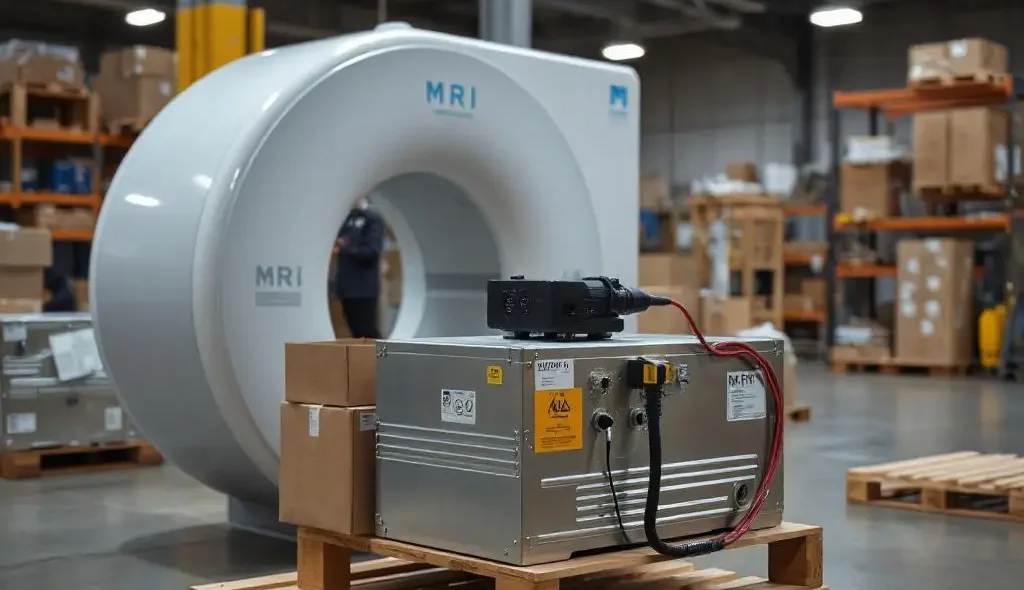Shipping Medical Equipment Safely and Efficiently
In today’s fast-paced healthcare industry, the transportation of medical equipment demands precision and care. Shipping medical equipment is critical for patient care, requiring adherence to strict regulations and attention to detail. Furthermore, timely delivery ensures healthcare facilities function without delays. This guide explores the basics of shipping medical devices, addressing challenges, best practices, and tips for successful delivery. Moreover, the importance of safe and efficient transportation cannot be overstated in maintaining patient health.
Challenges in Shipping Medical Equipment
Transporting medical equipment poses unique challenges due to its fragility, high value, and temperature sensitivity. Consequently, careful planning and the use of appropriate methods are essential for success. Key considerations include:
- Fragility: Devices like MRI machines and X-ray equipment require robust packaging to prevent damage during transit.
- Temperature Sensitivity: Vaccines and biologics need temperature-controlled environments to remain safe and effective. Additionally, maintaining a consistent temperature ensures product efficacy.
- Regulatory Compliance: Adhering to health authority regulations like FDA guidelines is essential for legal and safe transportation. As a result, compliance minimizes the risk of delays and penalties.
Best Practices for Shipping Medical Equipment
To ensure safe and timely delivery, follow these best practices for shipping medical devices and supplies:
1. Proper Packaging
Using the right packaging materials and methods protects medical equipment from impact, vibration, moisture, and temperature fluctuations. For instance, the use of specialized containers helps secure fragile items effectively.
- Custom Packaging: Tailor packaging to the dimensions and fragility of the equipment, using custom crates with padding for larger items. Therefore, each piece of equipment receives optimal protection.
- Shock Protection: Incorporate foam inserts, bubble wrap, or air-filled bags to absorb vibrations and shocks. Consequently, this reduces the risk of internal damage during transit.
- Temperature-Controlled Packaging: Use insulated containers for sensitive items like pharmaceuticals and biologics. As a result, these items maintain their required temperature range throughout the journey.
Additionally, labeling each package with clear instructions enhances handling and ensures compliance. For example, labels such as “fragile” or “temperature sensitive” alert handlers to take appropriate precautions (Shipping Medical Equipment). Furthermore, choosing the right carrier is crucial for ensuring the shipment meets delivery deadlines.

Medical Equipment
2. Labeling and Documentation
Proper labeling and documentation are critical for smooth transit:
- Labels: Clearly label packages with “fragile,” “this side up,” or “temperature sensitive” instructions.
- Customs Forms: Include accurate customs documentation for international shipments to avoid delays.
- Compliance Records: Ensure shipments meet health and safety regulations, such as FDA or CE requirements.
3. Choosing the Right Shipping Method
Select the appropriate shipping method based on the size, weight, and urgency of the shipment:
- Air Freight: Ideal for high-value, delicate, or time-sensitive equipment requiring expedited delivery.
- Ground Shipping: Suitable for non-urgent supplies, offering cost-effective transportation.
- Specialized Carriers: Use carriers experienced in handling medical equipment for added safety and precision.

Our Pick-Up Medical Equipment Service
We provide a dedicated pick-up service for sensitive medical equipment. Our trained team assesses the specific requirements of each item, ensuring safe handling and transport. Moreover, we prioritize meeting the highest standards to ensure equipment integrity throughout the journey. From initial collection to final delivery, we tailor our approach to protect your devices. Additionally, our thorough planning guarantees that every step is optimized for safety and efficiency. With industry-standard packing materials and secure fastening methods, we safeguard your equipment against shocks, vibrations, and temperature fluctuations. Consequently, your valuable devices arrive at their destination in perfect condition. Furthermore, we offer real-time tracking, allowing you to monitor the shipment’s progress at every stage. Shipping Medical Equipment.
Regulatory Compliance for Medical Shipments
Adhering to regulatory standards is essential when transporting medical equipment. For instance, failure to comply can result in delays, fines, or rejection of shipments. Therefore, understanding and meeting these requirements is crucial for successful delivery.
1. U.S. FDA Regulations
The FDA regulates medical devices entering and exiting the U.S. Ensure compliance by identifying the classification of your equipment (Class I, II, or III) and meeting the necessary requirements(Shipping Medical Equipment). Moreover, maintaining accurate documentation expedites customs clearance. For example, devices requiring additional approval must have completed documentation ready before shipment.
2. International Regulations
Each country has unique rules for importing medical devices. For example, CE marking is mandatory for shipments to the European Union, and some nations require import licenses for specific medical equipment. Additionally, understanding these requirements helps avoid unnecessary delays. Furthermore, working with an experienced logistics partner ensures all regulatory standards are met efficiently. Consequently, you can focus on your core operations while we handle the complexities of international compliance. Shipping Medical Equipment.
In summary, our pick-up medical equipment service combines expertise, precision, and regulatory compliance to deliver unmatched reliability. Contact us today to learn how we can support your medical equipment transportation needs.
Medical Supplies Shipping

1. Bulk Shipping
Efficiently packaging bulk medical supplies like masks, gloves, and syringes ensures they arrive intact. Palletizing and shrink-wrapping provide added security for large orders.
2. Temperature-Sensitive Supplies
Transporting vaccines, diagnostic kits, and medications requires insulated packaging and cold chain logistics to maintain temperature control throughout transit.
Conclusion: Ensuring Safe Medical Shipments
Shipping medical equipment involves careful planning, proper packaging, and compliance with regulations. By following best practices and partnering with experienced logistics providers, businesses can ensure their medical devices and supplies arrive safely and efficiently. Contact us today to learn more about our medical equipment shipping solutions.

